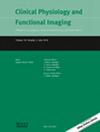Influence of physical fitness of coronary disease patients on vagal reentry and heart rate recovery after exercise with and without fluid replacement
Abstract
Background
Fluid replacement during exercise has been studied as an important strategy to enhance recovery, however, studies are needed to investigate the effect of this strategy in different physical profiles. The aim of the study was to investigate the influence of physical fitness of coronary artery disease (CAD) patients on vagal reentry and heart rate recovery after exercise performed with and without fluid replacement.
Methods
Nonrandomized crossover clinical trial. Thirty-three CAD patients were submitted to (I) cardiopulmonary exercise test: to divide the sample into lower and higher VO2 peak groups; (II) control protocol (CP): composed of rest, aerobic exercise and passive recovery; (III) hydration protocol (HP): composed of the same activities as the CP, but with water intake during exercise. The recovery was evaluated by vagal reentry and heart rate recovery immediately after exercise.
Results
The results did not show significant differences between the higher and lower VO2 peak groups. In addition, the hydration strategy adopted was not able to cause significant changes between control and HPs, regardless of group. However, a time effect was observed, suggesting anticipation of vagal reactivation and heart rate reduction in HP.
Conclusions
Physical fitness did not influence vagal reentry and heart rate recovery in CAD patients after exercise. However, the hydration strategy seems to have anticipated vagal reentry and produced a more efficient reduction in heart rate regardless of the individuals’ physical fitness, but these results should be analyzed with caution due to the absence of significant differences between groups and protocols.

 求助内容:
求助内容: 应助结果提醒方式:
应助结果提醒方式:


